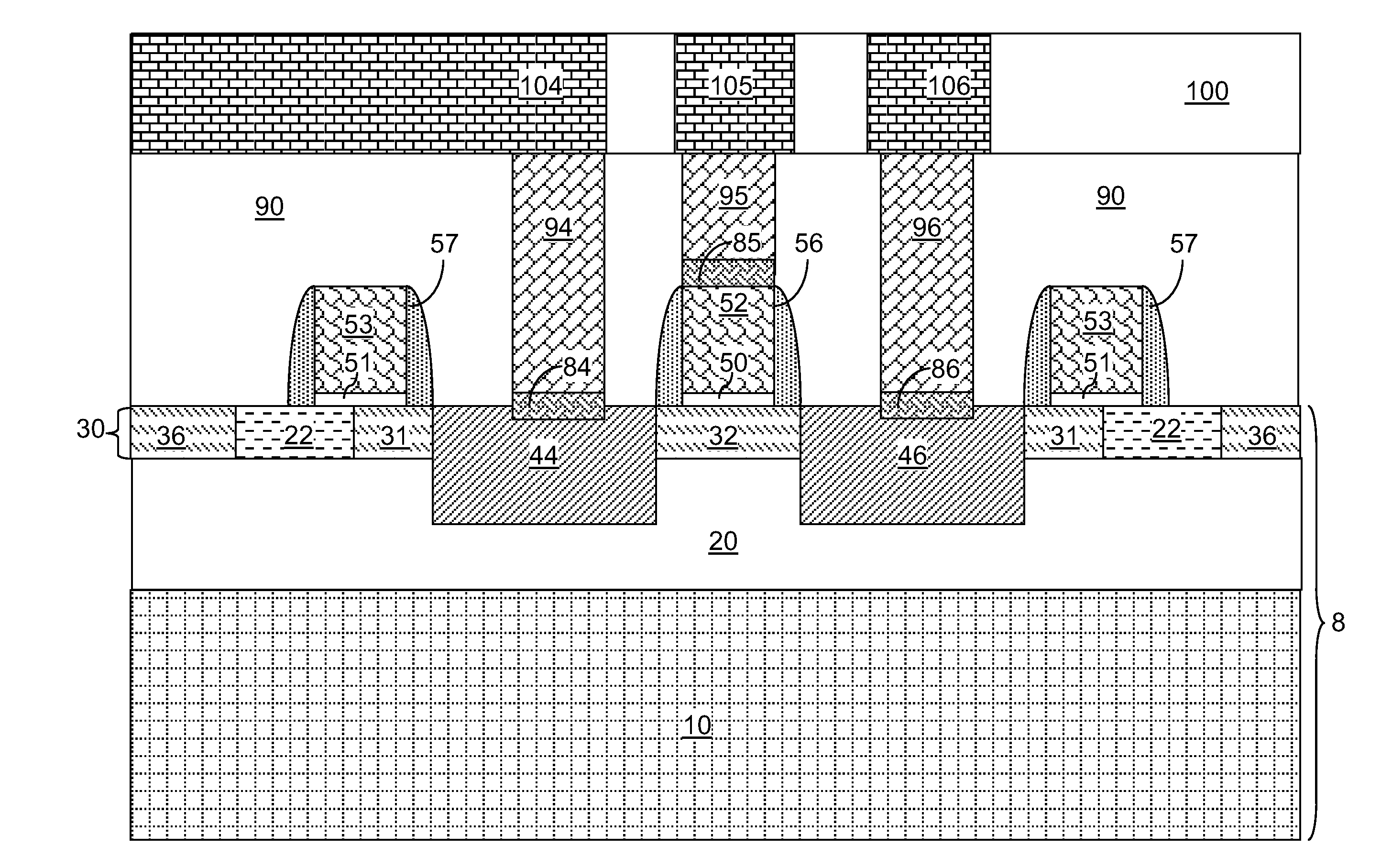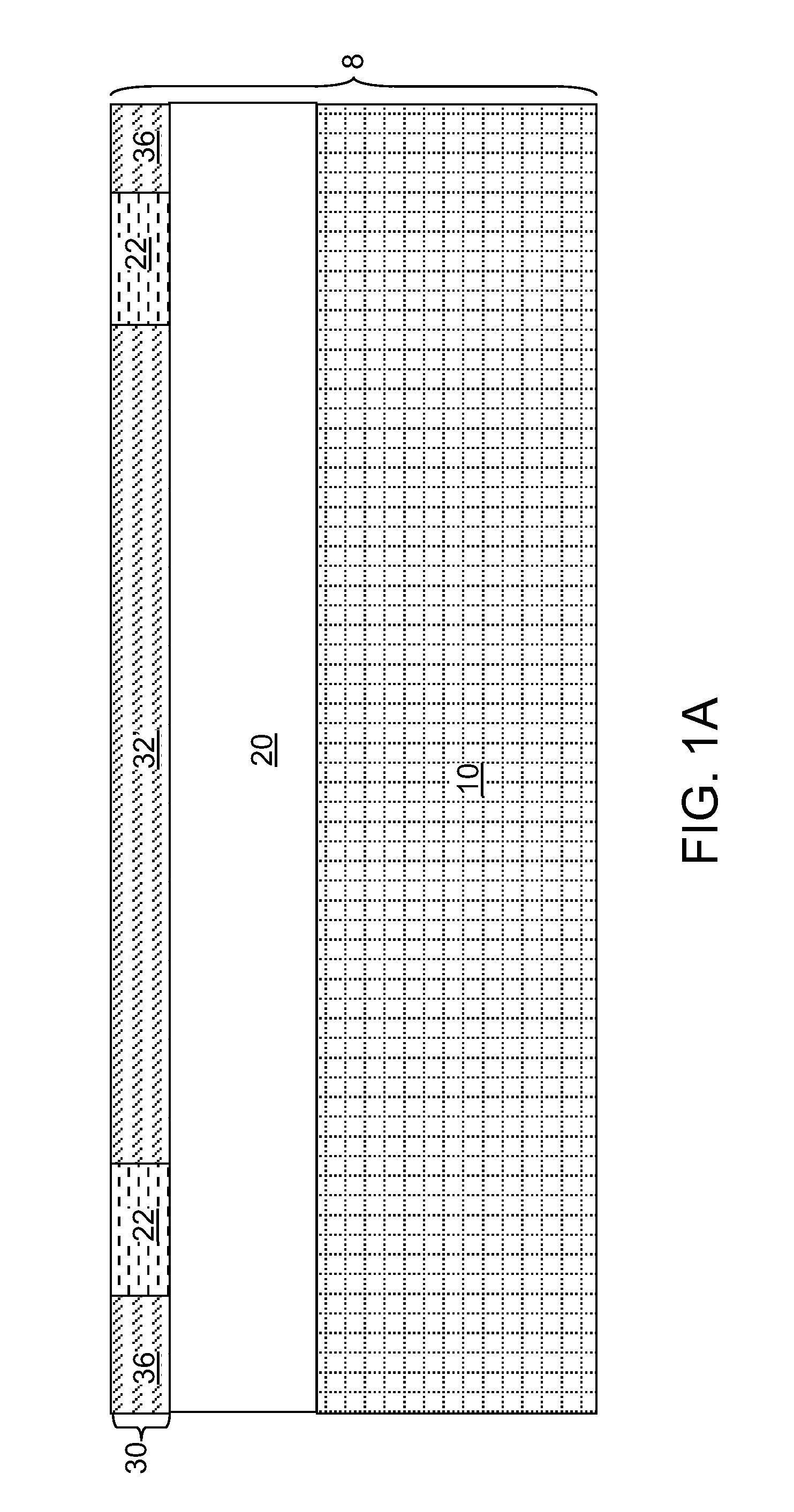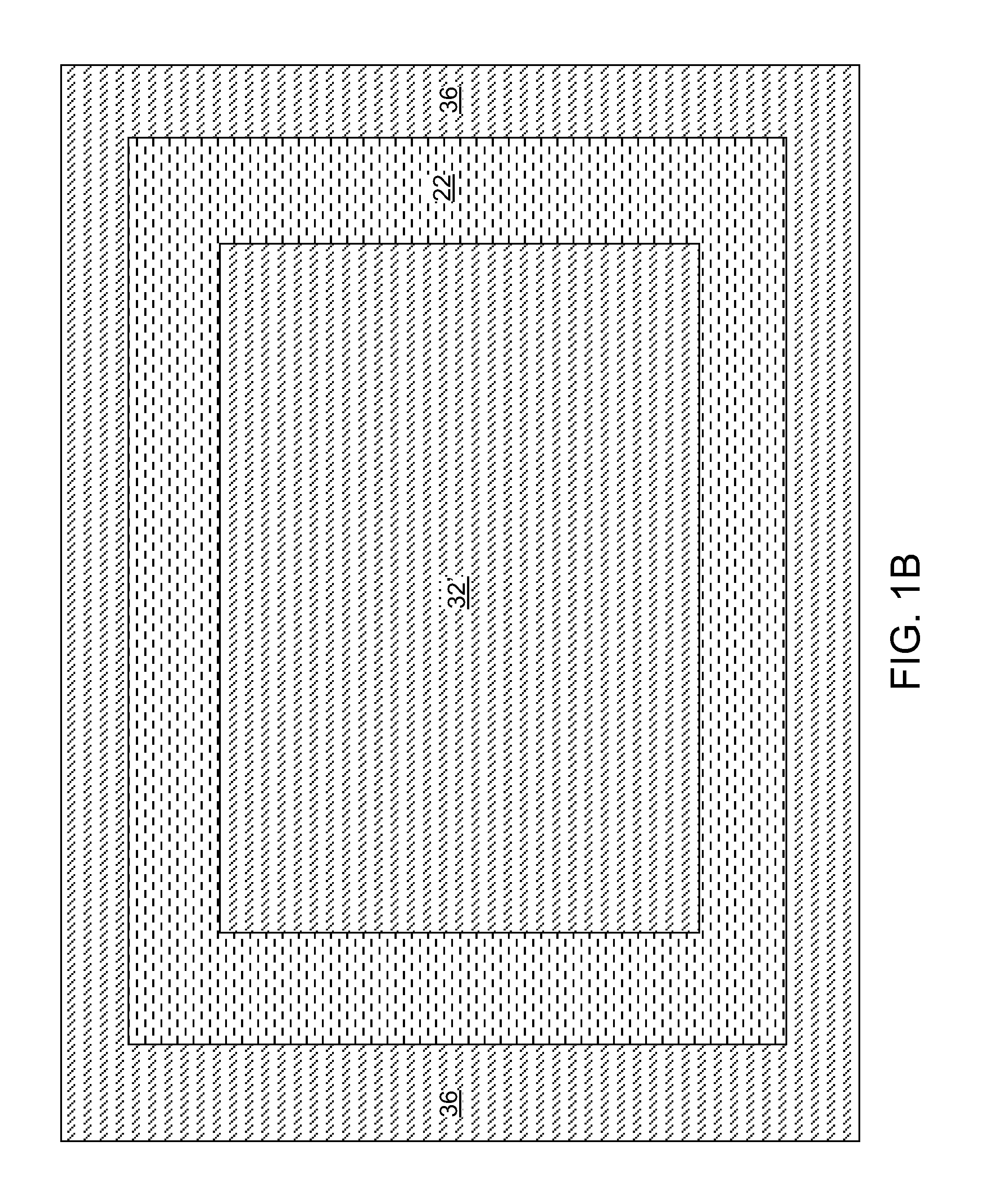Recessed Single Crystalline Source and Drain For Semiconductor-On-Insulator Devices
a single crystalline source and semiconductor technology, applied in the field of semiconductor structures, can solve the problems of affecting the performance of field effect transistors, high drain resistance adversely affecting the performance of devices formed on semiconductor-on-insulator (soi) substrates having a thin top semiconductor layer, and prone to performance degradation, so as to reduce parasitic capacitive coupling, reduce drain resistance, and improve the overall performance of etsoi devices.
- Summary
- Abstract
- Description
- Claims
- Application Information
AI Technical Summary
Benefits of technology
Problems solved by technology
Method used
Image
Examples
first embodiment
[0025]Referring to FIGS. 1A and 1B, a first exemplary semiconductor structure according to the present disclosure includes a semiconductor-on-insulator (SOI) substrate 8. The SOI substrate 8 includes a stack, from bottom to top, of a handle substrate 10, a buried single crystalline rare earth oxide layer 20, and a top semiconductor layer 30.
[0026]The handle substrate 10 provides structural support to, and prevents deformation or breakage of, the buried single crystalline rare earth oxide layer 20 and the top semiconductor layer 30. The thickness of the handle substrate 10 can be from 50 microns to 2 mm, although lesser and greater thicknesses can also be employed. The handle substrate 10 can include an amorphous, polycrystalline, or single crystalline semiconductor material, an insulator material, a conductor material, or a stack thereof
[0027]The buried single crystalline rare earth oxide layer 20 includes a single crystalline rare earth oxide material. Method of forming a single cr...
second embodiment
[0076]Referring to FIGS. 6A and 6B, a second exemplary semiconductor structure according to the present disclosure can be derived from the first exemplary semiconductor structure of FIGS. 1A and 1B by performing the processing steps of FIGS. 2A and 2B without forming any dummy gate stack (51, 53; See FIGS. 2A and 2B) or any dummy gate spacer (57; See FIGS. 2A and 2B).
[0077]Referring to FIGS. 7A and 7B, the same processing steps are performed as in FIGS. 3A and 3B in the first embodiment with the modification that the edges of the photoresist 77 is laterally shifted to overlie the contiguous single crystalline semiconductor material region 32′.
[0078]Referring to FIGS. 8A and 8B, the processing steps of FIGS. 4A and 4B in the first embodiment are performed. Alternatively, the processing steps for the variation of the first embodiment are performed. A source-side embedded single crystalline semiconductor material region 44 and a drain-side embedded single crystalline semiconductor mate...
PUM
 Login to View More
Login to View More Abstract
Description
Claims
Application Information
 Login to View More
Login to View More - R&D
- Intellectual Property
- Life Sciences
- Materials
- Tech Scout
- Unparalleled Data Quality
- Higher Quality Content
- 60% Fewer Hallucinations
Browse by: Latest US Patents, China's latest patents, Technical Efficacy Thesaurus, Application Domain, Technology Topic, Popular Technical Reports.
© 2025 PatSnap. All rights reserved.Legal|Privacy policy|Modern Slavery Act Transparency Statement|Sitemap|About US| Contact US: help@patsnap.com



